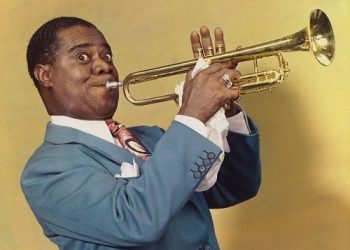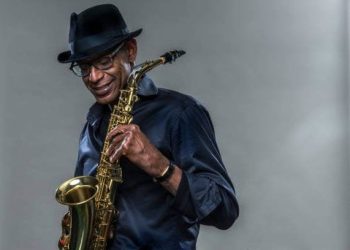Few instruments have the ability to captivate the soul quite like the saxophone. Its sultry, expressive tones have graced everything from jazz clubs to symphony halls, film scores to pop anthems, leaving an indelible mark on the world of music. But behind the saxophone’s magic lies a group of extraordinary individuals—masters of their craft who have pushed the boundaries of sound, emotion, and technique to elevate the instrument to legendary status. These are the players who didn’t just play the saxophone; they transformed it into a voice of their own.
In this article, we’ll take you on a journey through the lives and legacies of the 15 greatest saxophonists of all time. From the velvet-smooth ballads of Stan Getz to the fiery improvisations of John Coltrane, from the raw, groundbreaking energy of Charlie Parker to the genre-defying brilliance of players like Kenny G, these artists have redefined what the saxophone can do. Whether you’re a longtime jazz enthusiast or just discovering the instrument’s allure, prepare to be inspired by these musical icons who turned the saxophone into a tool for storytelling, innovation, and pure emotion. The legends await—let’s dive in!
1. Charlie Parker
Charlie Parker, affectionately known as “Bird,” is a towering figure in jazz history and one of the greatest saxophonists to ever grace the genre. Born in 1920 in Kansas City, Parker was a revolutionary artist who redefined jazz through his virtuosic technique, complex harmonies, and groundbreaking improvisation. A pioneer of bebop, he created a style that broke free from the traditional confines of swing and elevated jazz to an art form of unparalleled sophistication.
Parker’s compositions, such as Ornithology, Ko-Ko, and Now’s the Time, showcase his technical brilliance and unparalleled creativity. His ability to craft intricate, lightning-fast melodic lines with perfect phrasing and rhythmic precision set a new standard for jazz musicians. Beyond his technical prowess, Parker’s playing was imbued with raw emotion and storytelling, making his music both intellectually stimulating and deeply moving.
Despite personal struggles and a tragically short life—he passed away at the age of 34—Parker’s influence on music remains immeasurable. His collaborations with other legends, including Dizzy Gillespie, Miles Davis, and Thelonious Monk, produced some of the most iconic recordings in jazz history. These works continue to inspire and challenge musicians across generations.
Charlie Parker’s legacy is not merely as a saxophonist but as a visionary who expanded the possibilities of jazz. His contributions paved the way for future innovation in the genre, and his music remains a vital part of the jazz canon. Today, “Bird Lives!” is more than just a phrase—it’s a testament to the enduring spirit and genius of Charlie Parker.
2. John Coltrane
John Coltrane is celebrated not only as a saxophonist of extraordinary skill but as a musical visionary who sought to explore the depths of human experience and spirituality through sound. Born in 1926 in North Carolina, Coltrane became one of the most influential figures in jazz, leaving an indelible mark on the genre with his relentless innovation and profound artistry.
Coltrane’s journey to greatness was marked by a constant drive for growth. Early in his career, he collaborated with legends such as Miles Davis and Thelonious Monk, honing his craft and developing a distinctive voice. However, it was his solo work that truly defined his legacy. Albums like A Love Supreme, Giant Steps, and My Favorite Things are masterpieces that showcase his unparalleled technique, harmonic complexity, and deep emotional resonance.
A Love Supreme, in particular, stands as a testament to Coltrane’s spiritual awakening and devotion. The album is a suite that transcends music, serving as a meditation on faith, love, and the human connection to the divine. Coltrane’s ability to convey such profound themes through his saxophone continues to inspire listeners worldwide.
Known for his innovative improvisation and use of modal and avant-garde techniques, Coltrane pushed the boundaries of jazz, paving the way for genres like free jazz and fusion. His commitment to musical exploration and self-expression made him a trailblazer who influenced not only jazz musicians but artists across all disciplines.
John Coltrane’s music is more than entertainment; it’s a journey into the soul. His passion, discipline, and artistry ensure that his contributions to music and humanity will never be forgotten.
3. Sonny Rollins
Sonny Rollins, often called the “Saxophone Colossus,” is one of the most celebrated and enduring figures in jazz. Born in 1930 in Harlem, New York, Rollins became a beacon of innovation and creativity, renowned for his immense talent, unique improvisational style, and unyielding dedication to his craft.
Rollins’ influence on jazz is evident in his iconic recordings, such as the albums Saxophone Colossus and The Bridge. The former includes the unforgettable track St. Thomas, which combines his Caribbean roots with jazz, creating a tune that is as joyful as it is sophisticated. The Bridge, recorded after a period of self-imposed hiatus and practice, marked a triumphant return to the scene, highlighting his commitment to continuous growth and reinvention.
Rollins’ improvisational genius is perhaps his most celebrated trait. His ability to take a simple melodic idea and expand it into complex, breathtaking solos has earned him a reputation as a master of thematic development. Whether performing in a small club or on a grand stage, Rollins captivates audiences with his boundless energy, creativity, and spontaneity.
Throughout his career, Rollins has collaborated with some of jazz’s greatest artists, including Miles Davis, Thelonious Monk, and Max Roach. His willingness to explore different musical styles and his fearless approach to improvisation have solidified his status as a pioneer.
Even into his later years, Rollins remained an active and passionate advocate for music, using his platform to inspire and educate new generations of musicians. Sonny Rollins’ legacy is one of brilliance, innovation, and an unshakable love for the art of jazz. His music continues to resonate, reminding listeners of the transformative power of creativity.
4. Stan Getz
Stan Getz, often nicknamed “The Sound,” is remembered for his warm, lyrical tone and his significant contributions to jazz and beyond. Born in 1927 in Philadelphia, Getz became one of the most iconic tenor saxophonists of all time, captivating audiences with his effortless phrasing and emotive style. His work transcended jazz, introducing new sounds and styles to a global audience.
Getz’s career reached a pinnacle with his role in popularizing bossa nova music. Collaborating with Brazilian legends João Gilberto, Astrud Gilberto, and Antônio Carlos Jobim, Getz recorded the groundbreaking album Getz/Gilberto. This collaboration included the worldwide hit The Girl from Ipanema, which became a defining moment not only in Getz’s career but also in jazz history. His smooth, silky saxophone lines perfectly complemented the laid-back rhythms of bossa nova, creating music that remains timeless.
While his bossa nova success made him a household name, Getz’s earlier work in bebop and cool jazz showcased his technical brilliance and versatility. Albums like Focus and Stan Getz Plays reveal a masterful musician capable of blending complex improvisations with a uniquely melodic approach.
Getz’s playing was often described as singing through his instrument. His ability to convey emotion through tone and phrasing set him apart, making even the simplest melodies unforgettable. Whether interpreting a jazz standard or exploring the depths of Brazilian rhythms, Getz brought a sense of intimacy and beauty to every note he played.
Stan Getz’s legacy endures as one of the most melodic and expressive voices in jazz. His music continues to inspire both listeners and musicians, proving that true artistry transcends time and genre.
5. Lester Young
Lester Young, affectionately known as “Prez,” was a trailblazer in the world of jazz, renowned for his cool, laid-back style and innovative approach to the tenor saxophone. Born in 1909 in Mississippi, Young became a pivotal figure in the swing era, forever changing the way jazz was played and perceived.
Young rose to prominence as a member of the Count Basie Orchestra in the 1930s, where his smooth, understated tone provided a stark contrast to the more robust saxophone sounds of the time. His style, characterized by a light, airy sound and fluid phrasing, became a hallmark of what would later be known as “cool jazz.” Tracks like Lester Leaps In highlight his ability to blend technical sophistication with an infectious sense of joy and swing.
A close collaborator with Billie Holiday, Young shared a musical rapport that resulted in some of the most beautiful ballad interpretations in jazz. Their work together, including pieces like A Fine Romance and Easy Living, showcases Young’s sensitivity and ability to complement a vocalist seamlessly.
Beyond his technical skills, Young’s influence on jazz culture was profound. His relaxed demeanor, unique slang, and iconic pork-pie hat made him a beloved figure, and his musical innovations inspired generations of saxophonists, including Stan Getz and John Coltrane.
Lester Young’s contributions to jazz extend far beyond his lifetime. His groundbreaking approach to the tenor saxophone and his commitment to musical elegance have solidified his place as one of the genre’s true legends. His music remains a testament to the enduring power of creativity and individuality in jazz.
6. Coleman Hawkins
Coleman Hawkins, often hailed as the “Father of the Tenor Saxophone,” was a transformative figure in jazz history. Born in 1904 in Missouri, Hawkins elevated the tenor saxophone from a supporting role to a leading voice in jazz, setting the standard for generations of musicians to follow.
Hawkins gained prominence during his tenure with the Fletcher Henderson Orchestra in the 1920s and 1930s, where his robust tone and intricate improvisations quickly distinguished him as a force to be reckoned with. However, it was his 1939 recording of Body and Soul that cemented his legacy. In this iconic performance, Hawkins reimagined the popular tune, creating a masterpiece of harmonic innovation and emotional depth. The recording not only redefined the saxophone’s role in jazz but also set a new benchmark for improvisation.
Known for his ability to seamlessly blend technical prowess with emotional expression, Hawkins was a versatile artist who adapted to the evolving landscape of jazz. From swing to bebop, he remained at the forefront, collaborating with legends like Thelonious Monk, Miles Davis, and Dizzy Gillespie.
Hawkins was not just a virtuoso but also a mentor and advocate for younger musicians, often championing the bebop movement and helping to bridge the gap between traditional jazz and its modern iterations. His willingness to evolve and embrace new ideas ensured his relevance throughout his career.
Coleman Hawkins’ contributions to jazz are immeasurable. His innovations laid the groundwork for modern saxophone playing, and his artistry continues to inspire musicians across genres. As one of the first true saxophone stars, Hawkins’ music remains a timeless reminder of jazz’s transformative power.
7. Cannonball Adderley
Cannonball Adderley, one of the most soulful and vibrant figures in jazz, was a master of the alto saxophone. Born in 1928 in Tampa, Florida, Adderley’s charismatic personality and blues-infused playing brought an infectious energy to every performance. A leading figure in the hard bop movement, his music resonated with both seasoned jazz aficionados and casual listeners alike.
Adderley gained early recognition for his virtuosic playing, which earned him comparisons to Charlie Parker. However, he quickly developed his own voice, blending technical mastery with an unmistakable sense of groove. His time with Miles Davis, particularly on the legendary album Kind of Blue, showcased his ability to seamlessly integrate into groundbreaking musical contexts. Adderley’s solos on tracks like So What and Freddie Freeloader reflect his lyrical phrasing and impeccable sense of timing.
As a bandleader, Adderley created some of the most memorable jazz recordings of his era. His hit Mercy, Mercy, Mercy, written by Joe Zawinul, became a crossover success, blending jazz, soul, and funk in a way that captivated audiences. Albums like Somethin’ Else and The Cannonball Adderley Quintet in San Francisco highlighted his ability to balance technical brilliance with emotional depth.
What truly set Adderley apart was his joyful approach to music. His live performances were marked by warmth, humor, and an ability to connect deeply with audiences. He often introduced songs with insightful commentary, breaking down barriers between performer and listener.
Cannonball Adderley’s music continues to inspire for its combination of soul, sophistication, and accessibility. His legacy as a musician and entertainer remains a shining example of jazz’s ability to touch hearts and move feet.
8. Dexter Gordon
Dexter Gordon, affectionately nicknamed “Long Tall Dexter,” was a towering figure in more ways than one. Standing over six feet tall, Gordon’s commanding presence was matched by his warm, resonant tenor saxophone sound, making him one of the most iconic saxophonists in jazz history. Born in 1923 in Los Angeles, Gordon was a pioneer in bringing bebop to the tenor saxophone, bridging the gap between swing and modern jazz.
Gordon’s career took off in the 1940s when he worked with big bands led by Lionel Hampton and Billy Eckstine. It was during this time that he developed his distinctive style, characterized by a rich, robust tone, melodic phrasing, and an ability to swing effortlessly. Albums like Go! and Dexter Calling… remain quintessential recordings that showcase his ability to balance technical precision with heartfelt expression.
A gifted improviser, Gordon had a knack for weaving quotes from popular songs into his solos, adding a playful and unexpected twist to his performances. His ability to engage audiences extended to his charismatic stage presence, where he often delighted fans with his wit and charm.
Gordon spent much of the 1960s and 1970s living in Europe, where he became a cultural ambassador for jazz. During this period, he recorded some of his most celebrated work, including the album Our Man in Paris. Upon his return to the United States, he experienced a career renaissance, earning critical acclaim and even an Academy Award nomination for his role in the film Round Midnight.
Dexter Gordon’s contributions to jazz are immense, and his music continues to captivate listeners with its elegance and soul. His legacy endures as a symbol of the timeless appeal of great jazz artistry.
9. Ornette Coleman
Ornette Coleman, born in 1930 in Fort Worth, Texas, was a revolutionary figure who forever altered the trajectory of jazz. A trailblazer of free jazz, Coleman broke away from traditional harmonic structures, creating music that prioritized raw emotion and spontaneity over convention. His daring approach made him one of the most polarizing yet influential artists in the history of the genre.
Coleman’s groundbreaking album The Shape of Jazz to Come was aptly titled, as it challenged every preconceived notion about what jazz could be. Tracks like Lonely Woman introduced his concept of “harmolodics,” a theory that allowed for fluid interplay among musicians without the constraints of traditional chord changes. His improvisations on the alto saxophone were bold and unrestrained, often described as speaking directly to the soul.
Throughout his career, Coleman sought to push boundaries. Albums like Free Jazz: A Collective Improvisation featured unconventional ensemble formats, including a double quartet playing simultaneously. This approach redefined the relationship between structure and freedom in music, inspiring countless avant-garde musicians.
While Coleman’s music was sometimes met with resistance, his influence extended far beyond jazz. His ideas resonated with artists in genres as diverse as rock, classical, and electronic music. Collaborations with musicians like Pat Metheny and his Pulitzer Prize-winning album Sound Grammar demonstrated his enduring relevance and adaptability.
Ornette Coleman’s fearless creativity and commitment to innovation left an indelible mark on the world of music. His willingness to challenge norms and embrace the unknown serves as an enduring reminder of the boundless possibilities of artistic expression.
10. Grover Washington Jr.
Grover Washington Jr. is often celebrated as a pioneer of smooth jazz, seamlessly blending elements of jazz, R&B, and funk to create a sound that resonated with a broad audience. Born in 1943 in Buffalo, New York, Washington’s silky saxophone tone and accessible style made him one of the most influential instrumentalists of his time.
Washington’s breakthrough came with the release of Mister Magic in 1975, a landmark album that showcased his ability to craft catchy, groove-oriented tunes without sacrificing musical sophistication. The title track, with its funky bassline and lush melodies, remains a classic in the smooth jazz repertoire. Another iconic moment in his career was his collaboration with Bill Withers on Just the Two of Us, a song that achieved immense commercial success and cemented his place in popular music.
Despite his smooth jazz label, Washington’s versatility extended far beyond the genre. Albums like Winelight revealed his ability to weave complex harmonies and improvisational brilliance into his compositions, appealing to both jazz purists and casual listeners. His command of the alto, tenor, and soprano saxophones allowed him to explore a wide range of textures and moods, giving his music a rich and dynamic quality.
What set Washington apart was his knack for storytelling through his music. Whether playing a soulful ballad or an upbeat groove, he imbued every note with emotional depth and authenticity. His performances exuded warmth and charisma, drawing listeners into his world with effortless charm.
Grover Washington Jr.’s legacy lies in his ability to bridge the gap between traditional jazz and contemporary sounds. His music continues to inspire musicians across genres, and his timeless recordings remain beloved by fans worldwide.
11. Michael Brecker
Michael Brecker was a saxophonist whose technical brilliance and creative vision set him apart as one of the most respected musicians of his generation. Born in 1949 in Philadelphia, Brecker’s career spanned an incredible range of styles, from jazz fusion to post-bop, earning him a reputation as a true innovator on the tenor saxophone.
Brecker first rose to prominence as part of the Brecker Brothers, a jazz fusion group he formed with his brother, Randy. The band’s high-energy performances and complex compositions showcased Brecker’s virtuosic playing and ability to blend genres seamlessly. Over time, he became one of the most sought-after session musicians, lending his distinctive sound to artists like Paul Simon, Joni Mitchell, and Steely Dan.
As a solo artist, Brecker’s albums, including Michael Brecker and Time Is of the Essence, pushed the boundaries of jazz improvisation and composition. His remarkable ability to navigate intricate harmonic landscapes with ease earned him widespread admiration. Brecker’s improvisations were characterized by their lyrical quality, breathtaking speed, and unparalleled technical precision.
One of Brecker’s most notable contributions was his embrace of the Electronic Wind Instrument (EWI), which allowed him to explore new sonic possibilities. His pioneering use of this instrument expanded the expressive potential of wind players and demonstrated his constant drive to innovate.
Tragically, Brecker’s life was cut short in 2007 due to leukemia. However, his impact on the jazz world remains profound. His fearless creativity, remarkable skill, and dedication to his craft continue to inspire saxophonists and music lovers alike. Michael Brecker’s legacy is one of excellence and innovation, a testament to the endless possibilities of the saxophone.
12. Kenny G
Kenny G, born Kenneth Bruce Gorelick in 1956 in Seattle, Washington, is one of the best-selling instrumentalists of all time, renowned for his smooth and emotive saxophone sound. While he has often been a polarizing figure in the jazz world, there is no denying his immense impact on bringing instrumental music to mainstream audiences.
Kenny G’s rise to fame began in the 1980s with the release of albums like Duotones and Silhouette, which featured his signature blend of jazz, pop, and R&B. His hit song Songbird, with its simple yet hauntingly beautiful melody, catapulted him to international stardom, making him a household name. His smooth soprano saxophone tone and accessible compositions appealed to listeners across the globe, earning him multiple Grammy nominations and millions of record sales.
Critics often debate Kenny G’s placement within the jazz genre, but his influence on smooth jazz and contemporary instrumental music is undeniable. His ability to craft melodies that resonate emotionally with a wide audience set him apart. Albums like Breathless and Miracles: The Holiday Album remain among the best-selling instrumental records of all time.
Beyond his commercial success, Kenny G has collaborated with artists from various genres, including Whitney Houston, Aretha Franklin, and Frank Sinatra. These partnerships highlight his versatility and willingness to bridge musical boundaries.
While some purists may question his jazz credentials, Kenny G’s enduring popularity and ability to connect with listeners have solidified his place in music history. His contribution to popularizing instrumental music and his unique sound continue to inspire debates and admiration, ensuring his legacy as a significant figure in modern music.
13. Wayne Shorter
Wayne Shorter was a visionary saxophonist and composer whose contributions to jazz reshaped the genre’s boundaries. Born in 1933 in Newark, New Jersey, Shorter’s career spanned over six decades, during which he worked with some of the most iconic figures in music and helped define both post-bop and jazz fusion.
Shorter first gained recognition as a member of Art Blakey’s Jazz Messengers, where his innovative compositions began to turn heads. His reputation grew further during his time with the Miles Davis Quintet in the 1960s, a group that revolutionized jazz with its bold experimentation. Shorter’s compositions for the group, such as Footprints and Nefertiti, showcased his unique approach to harmony and melody, which often strayed from traditional structures while maintaining an emotive core.
In the 1970s, Shorter co-founded Weather Report, one of the most influential jazz fusion bands in history. Albums like Heavy Weather blended jazz with rock, funk, and world music, and Shorter’s saxophone playing was a key element in the band’s distinctive sound. Tracks such as Birdland and A Remark You Made displayed his ability to balance technical brilliance with lyrical beauty.
Shorter’s solo career was equally impactful, with albums like Speak No Evil and Native Dancer cementing his reputation as a forward-thinking artist. His compositions often had a cinematic quality, weaving intricate narratives through his use of complex harmonies and dynamic improvisation.
Wayne Shorter’s music was deeply spiritual, reflecting his lifelong exploration of philosophy and human connection. His relentless curiosity and boundary-pushing artistry left an indelible mark on jazz and beyond. Even after his passing in 2023, his influence remains profound, inspiring generations of musicians to think outside the box and create with purpose.
14. Rahsaan Roland Kirk
Rahsaan Roland Kirk was a one-of-a-kind musician whose boundary-breaking approach to the saxophone made him an unforgettable figure in jazz. Born in 1935 in Columbus, Ohio, Kirk’s career was marked by his incredible technical skill, innovative spirit, and theatrical live performances that pushed the limits of musical expression.
Kirk was a multi-instrumentalist, famously playing multiple saxophones simultaneously. This feat, combined with his use of unconventional techniques like circular breathing, allowed him to produce rich, layered sounds that seemed impossible for a single musician. Albums like The Inflated Tear and Rip, Rig and Panic showcase his ability to blend jazz, soul, gospel, and avant-garde elements into a cohesive and captivating style.
Despite losing his sight at a young age, Kirk’s creativity knew no bounds. He was a master of improvisation, often weaving snippets of well-known songs into his solos to surprise and delight audiences. His performances were as much about entertainment as they were about musical brilliance, with Kirk using whistles, nose flutes, and spoken word to create an immersive experience.
One of Kirk’s defining traits was his deep respect for jazz history, which he often sought to preserve and honor. He championed the legacy of traditional jazz while simultaneously challenging its conventions. This duality made him a beloved figure among fans and a respected innovator among peers.
Rahsaan Roland Kirk’s fearless creativity and unapologetic individuality left an enduring legacy in jazz. His music continues to inspire those who dare to think differently, and his life stands as a testament to the power of passion and determination in overcoming adversity.
15. Chris Potter
Chris Potter is a modern saxophone virtuoso whose technical mastery and innovative compositions have positioned him as one of the leading voices in contemporary jazz. Born in 1971 in Chicago, Illinois, Potter began making waves as a prodigious talent in his teenage years and has since built a career defined by versatility and artistic excellence.
Potter’s ability to seamlessly navigate between genres has earned him widespread acclaim. Whether playing straight-ahead jazz, exploring fusion, or delving into experimental music, his improvisations are marked by precision, inventiveness, and emotional depth. Albums like Underground and Circuits demonstrate his ability to push the boundaries of traditional jazz while maintaining a deep connection to its roots.
As a composer, Potter’s work is both ambitious and accessible. His pieces often incorporate intricate harmonic structures and rhythmic complexity, challenging musicians while captivating listeners. His collaborations with jazz luminaries like Pat Metheny, Dave Holland, and Herbie Hancock have further solidified his reputation as a musician’s musician.
Potter’s technical prowess is particularly notable, as he frequently performs jaw-dropping solos that showcase his command over the instrument. Yet, despite his technical brilliance, he never sacrifices musicality, consistently delivering performances that are as heartfelt as they are impressive.
Beyond his skills as a player and composer, Potter is also an educator and mentor, inspiring the next generation of jazz musicians with his knowledge and passion. His commitment to innovation and excellence ensures that he remains a prominent figure in the jazz world.
Chris Potter’s artistry embodies the spirit of modern jazz: deeply rooted in tradition but always looking forward. His contributions continue to shape the evolution of the genre, making him a true trailblazer of his time.









